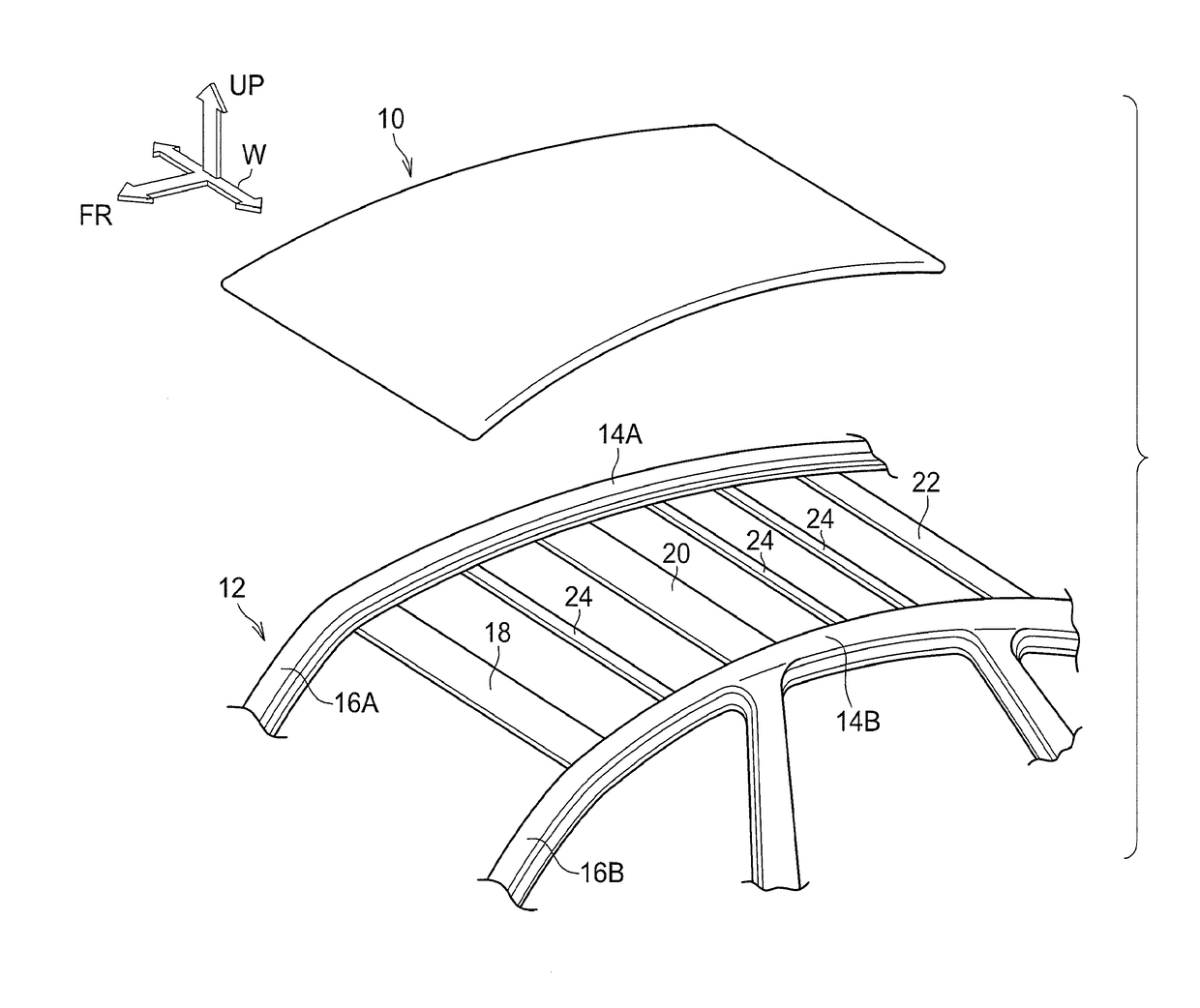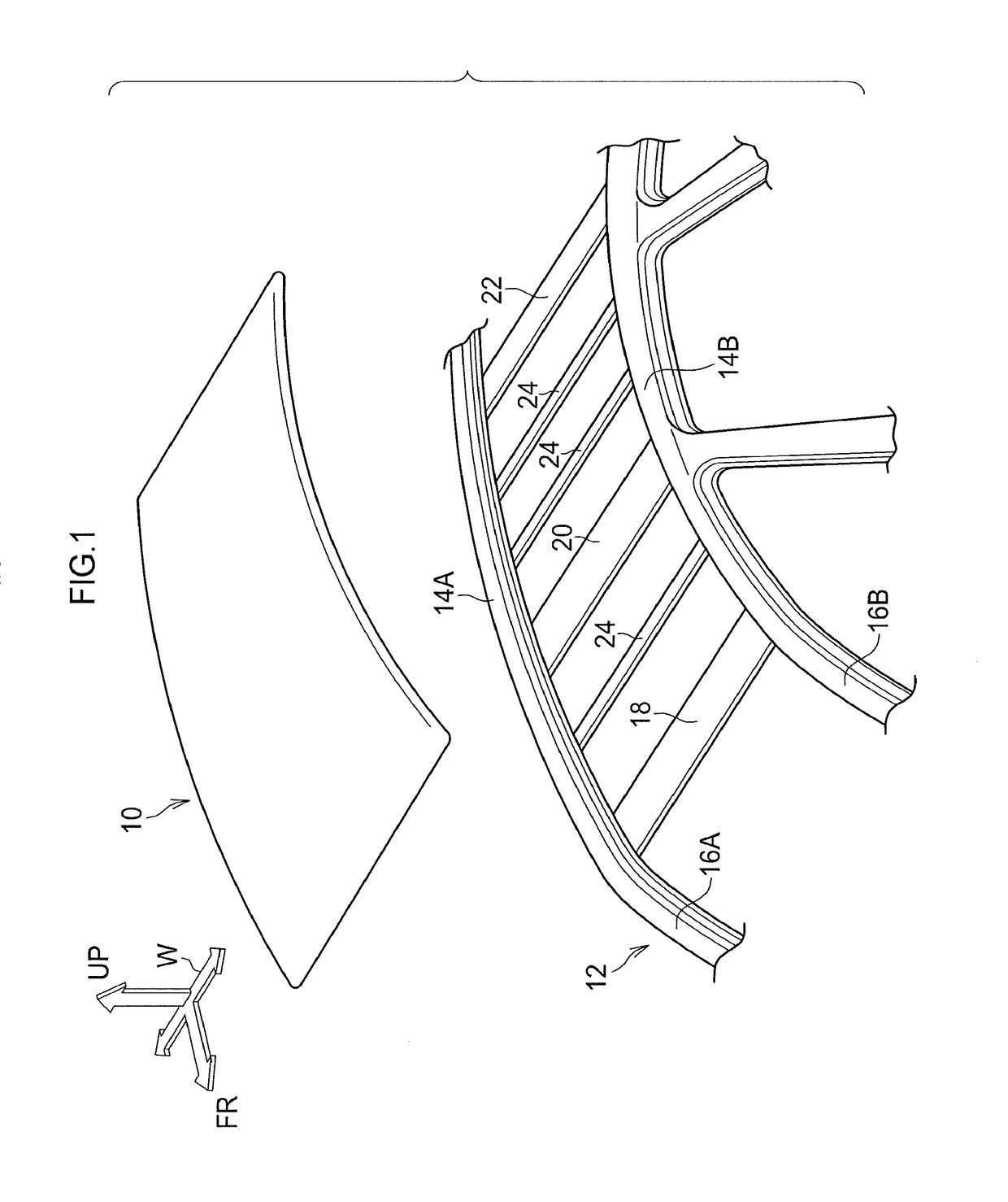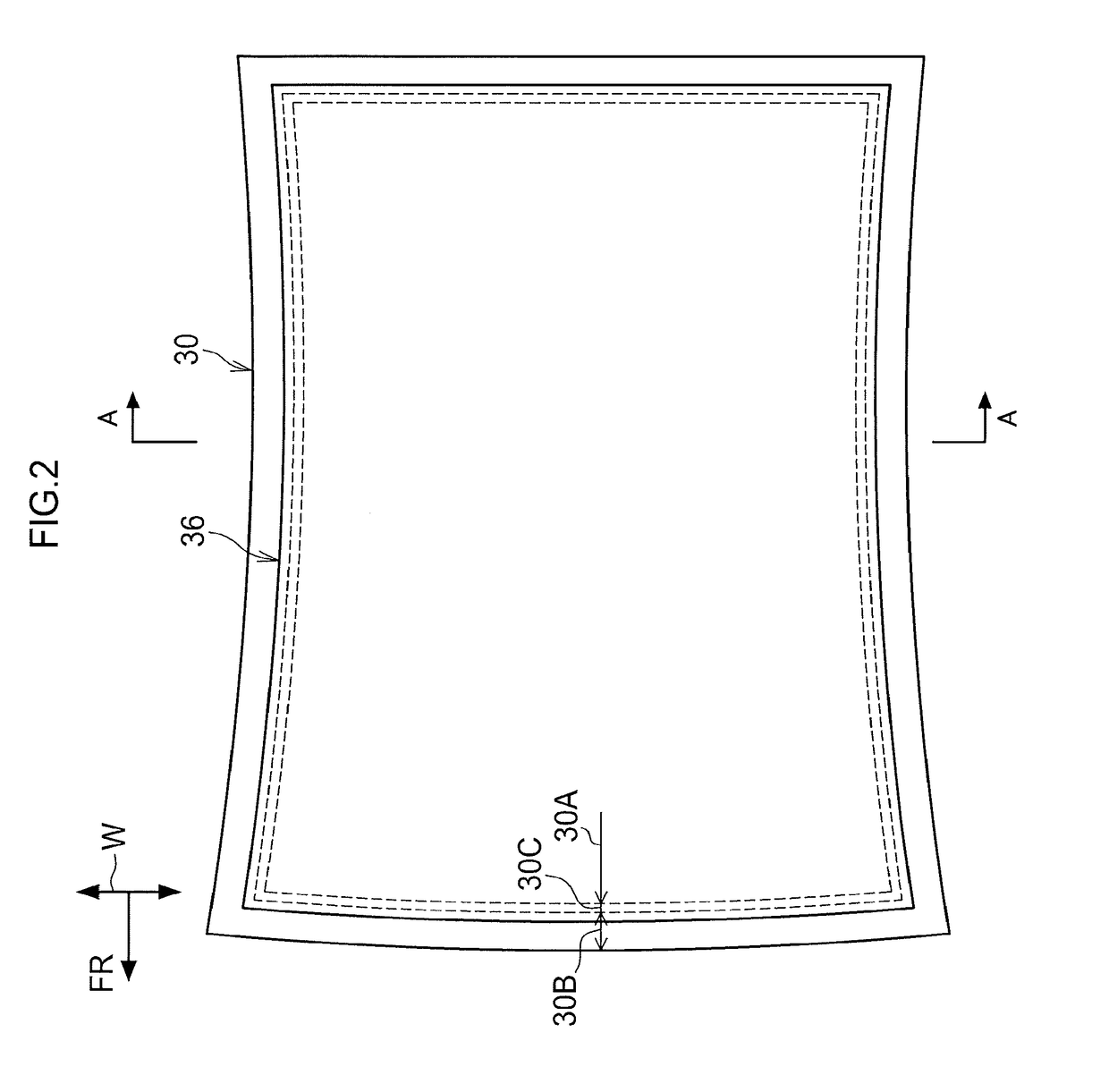On-board solar battery module
a solar battery and module technology, applied in the field of on-board solar battery modules, can solve the problems of increasing the number of parts, increasing the complexity of the structure, and the concern of a drop in the flexural rigidity of the on-board solar battery module at this section, and achieve the effect of controlling the buckling
- Summary
- Abstract
- Description
- Claims
- Application Information
AI Technical Summary
Benefits of technology
Problems solved by technology
Method used
Image
Examples
Embodiment Construction
[0026]An on-board solar battery module 10 pertaining to an embodiment of the present invention will now be described with reference to FIG. 1 to FIG. 6. It should be noted that the on-board solar battery module 10 pertaining to the present embodiment is attached as a roof of a vehicle body to vehicle skeleton members. Furthermore, the drawings are representative, and parts having little association with the present invention are not shown in the drawings. Moreover, in FIG. 1, arrow FR indicates a vehicle forward direction, arrow W indicates a vehicle width direction, and arrow UP indicates a vehicle upward direction.
[0027](Configuration)
[0028]As shown in FIG. 1 the on-board solar battery module 10 for an automobile pertaining to the present embodiment is attached as a roof to a vehicle body 12. The vehicle body 12 has, as members that support the on-board solar battery module 10, a pair of roof side rails 14A and 14B that are disposed on both vehicle width direction end portions and...
PUM
 Login to View More
Login to View More Abstract
Description
Claims
Application Information
 Login to View More
Login to View More - R&D
- Intellectual Property
- Life Sciences
- Materials
- Tech Scout
- Unparalleled Data Quality
- Higher Quality Content
- 60% Fewer Hallucinations
Browse by: Latest US Patents, China's latest patents, Technical Efficacy Thesaurus, Application Domain, Technology Topic, Popular Technical Reports.
© 2025 PatSnap. All rights reserved.Legal|Privacy policy|Modern Slavery Act Transparency Statement|Sitemap|About US| Contact US: help@patsnap.com



